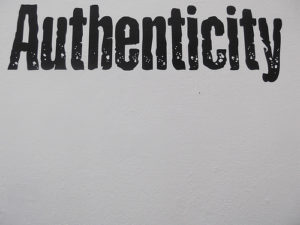Mary E. Marshall's Blog, page 30
June 21, 2016
Accountability & Planning
 “Plans are nothing; planning is everything.”
-Dwight D. Eisenhower
“Plans are nothing; planning is everything.”
-Dwight D. Eisenhower
June is the midway point in the year for most companies or individuals who declared goals or are working towards a plan. What I have found is that this is the point where we change, adjust and re-engage or the whole plan goes by the wayside.
It boils down to accountability. As leaders, we are willing to hold others accountable but they will only be as accountable as we are to ourselves. And that starts with our personal, professional and business goals. Remember the old saying, don’t ask someone to do what you are not willing to do for yourself? Accountability to oneself is hard, especially for those who believe in putting others first. Putting others first means you will give up or negate holding yourself accountable to your own promises. It’s not selfish to put your oxygen mask on first before putting one on someone else. If you run out of oxygen, you both die. Think of holding yourself accountable the same way. If you don’t go first, the “plan” will not work.
The first step in a goal review is to rank yourself on how you are doing – on or off-track. If off-track, what is it going to take to get back on track? Is it still worth doing? Some people stick to their goals, no matter what and are loath to change or remove them. This doggedness can be good, but it can also lead to time, energy and money being spent on the wrong things. Testing the goal for relevancy is completely appropriate if the reason for doing so no longer exists or other events have occurred to make it irrelevant.
I remember a saying I heard once that goes “doing something with great efficiency that should not be done, is fallacy.” And I see a lot of fallacy in business. Testing our goals to see if they still make sense is important. Taking them off the list because they were too hard, is not the same. If the goal still helps to shorten the gap between where you are and where you want to be, it should stay. If you need to adjust timing, resources or metrics, that’s advisable. Remember, goals should be a stretch, but not impossible or they become self-defeating.
Lastly, you may want to add goals to the list based on what has happened in the last six months. What other opportunities have arisen? What threats have come up? I find that when leaders, or anyone for that matter, make goals a practice, they often accomplish a lot more, much earlier than they think. The participants from my Emerging Leaders Class create a three-year growth plan and most end up accomplishing everything in much less than three years. It’s the planning process that works and then holding yourself and others accountable. Remember, as the leader, you get to go first.
The post Accountability & Planning appeared first on Mary Marshall // CEO Coach.
June 15, 2016
Leadership: Thoughts, Words and Destiny
 Watch your thoughts, for they become words
Watch your thoughts, for they become words
Watch your words, for they become actions
Watch your actions, for they become habits
Watch your habits, for they become character
Watch your character, for it will become your destiny
-Origin unknown, often attributed to Lao Tzu
We often sit back and wonder, how did we get here? The quote above provides a road map. Who we are starts with our thoughts and more often than not, those thoughts turn into words that we may or may not have intended to come out.
Leaders sometimes say something they wish they could take back, or now the common phrase is “walk back” when a politician says something particularly inaccurate or galling. As I have written previously, one way to think of integrity is as your word. If you say something you regret, own it and clean it up.
The key to all of this is to start with your thoughts, as everything else is a waterfall from there and that will indeed become your destiny.
So how do you control your thoughts? Easier said than done. In my work with executives and leaders, I ask them to consider slowing down. When the thought appears, or starts chatting in their heads, I tell them to practice taking a beat and stopping before they speak. Next, question the thought, is it accurate? Are there other ways of thinking about the issue? Is it opinion or fact?
The split second of “pause” between the thought and the word can make all the difference in the world. As a leader, everything you say is taken as true or as “what is,” even though sometimes you may simply be thinking out loud. The problem is that we don’t let people know when we are simply thinking through different things vs. declaring the way it is.
Let’s walk through a scenario. A leader continually makes derogatory comments about a particular individual or group of individuals. Perhaps these are just personal opinions vs. issues based in fact. Now, because he or she had said these words many times there is likely some actions that will result. Others will assume the leader doesn’t like that individual or group and act accordingly – either the same or worse depending on their level of influence. In fact, it might become acceptable to shun the person or persons. Now we have a “culturally acceptable” habit in the organization. From the outside, this culture could be defined using words such has “racist,” “bigot,” “hater,” etc. This may not have been the original thought or intention in the leader’s head, but now it’s the organization’s destiny. This may sound harsh, but this is the reality of the power of the ripple effect of leadership.
How do you want to be remembered? What do you want your destiny to be? It starts with your thoughts so be intentional.
The post Leadership: Thoughts, Words and Destiny appeared first on Mary Marshall // CEO Coach.
June 7, 2016
Funding Resources – Fact and Fiction
We are hitti ng the midway point in the Emerging Leaders course I teach through Interise at the SBA and just finished our second class in the financial section. This is always the toughest section for everyone because let’s face it, there is only a small portion of entrepreneurs that love the numbers. However, if it weren’t for the numbers, there would not be a business. In fact, when the lights go on for understanding about how to move the needle by pulling the different levers or metrics financially, business can be really fun!
ng the midway point in the Emerging Leaders course I teach through Interise at the SBA and just finished our second class in the financial section. This is always the toughest section for everyone because let’s face it, there is only a small portion of entrepreneurs that love the numbers. However, if it weren’t for the numbers, there would not be a business. In fact, when the lights go on for understanding about how to move the needle by pulling the different levers or metrics financially, business can be really fun!
When entrepreneurs understand how to interpret the data on financial reports, they can start to grow their businesses in a more thoughtful way, which usually means “safer.” Of course, sometimes knowledge can make us wish we didn’t know what we were looking at so we could go back to “ignorance is bliss,” but knowing is better. If you look at the stats for why small businesses fail, lack of cash is almost always the leading cause. So, first comes knowledge, then comes the need for more money.
There are multiple ways to get money for a small business but they are not always easy or in fact advisable. When someone asks me which approach to take for funding, my answer is always – it depends. And now, thanks to a local banker who forwarded me this amazing free resource, all the information about funding is available to you in one place!
Maury Forman with the Washington State Department of Commerce Office of Economic Development & Competitiveness created this ebook call Start Up Wisdom that has 27 different funding strategies for you to review. Each one only takes up two pages and he talks about the pros and cons of each. I think this is absolutely the BEST guide I have ever seen for entrepreneurs who are thinking about funding. It walks you through what each strategy is, how it works, advantages and disadvantages and an example of each.
And although this was written by our Washington State Department of Commerce, it really can apply nationally as it’s all the same. So for all of you entrepreneurs, would-be entrepreneurs or junkies of information, here is the funding guide for you. I’m going to start using this as a resource for my participants immediately. Thank You, Maury Forman and Washington state! I appreciate seeing my tax dollars go for a great cause!
photo credit: 100 Dollar Bills via photopin (license)
The post Funding Resources – Fact and Fiction appeared first on Mary Marshall // CEO Coach.
June 1, 2016
Feedback that People Can Hear
 As employers, sometimes giving employees corrective or developmental feedback can be the most difficult thing we do. It’s not always easy and as humans, we would rather not do it unless it’s completely necessary. It probably has to do with our basic need to be liked and the belief that if we give someone constructive or negative feedback, we will not be liked.
As employers, sometimes giving employees corrective or developmental feedback can be the most difficult thing we do. It’s not always easy and as humans, we would rather not do it unless it’s completely necessary. It probably has to do with our basic need to be liked and the belief that if we give someone constructive or negative feedback, we will not be liked.
The reality is that when we are honest with people and help them with something that is not serving them well, they are often, (but not always), grateful.
I was reminded recently about the Buddhist Principle of “right speech.” What it says is that a well-spoken statement is one that is offered:
At the right time
Truthfully
Affectionately
Beneficially
From a mindset of goodwill
Any behavior change has to do with how the person “hears” or interprets what is being said. With these five guidelines, I think we can be much more successful at delivering feedback or guidance that will produce positive changes versus indifference or resistance.
At the Right Time – this should be self-evident but it’s not. When someone is in an emotional state, upset or angry, they are not likely to really hear anything you have to say. Make an appointment to talk with them or at a minimum ask “if this is a good time to talk about X” vs. just saying “I want to see you in my office.” Most importantly, it’s at the right time for the other person, not just you.
Truthfully – you’ve all heard the method of delivering feedback in the proverbial sh#* sandwich. Tell them something good, then the bad, then leave them with something good. I’m here to tell you that It doesn’t work. All they hear is the bad. So just get to the point and deliver the feedback truthfully, and also as neutrally as possible, e.g., ”Your behavior around X is causing your co-workers to disengage and be less collaborative with you. Was that your intent?” This is like the old TV show with Joe Friday, the detective, “just the facts ma’am.” You want to elicit the facts and not get into a big, long, emotional story.
Affectionately – I can imagine some of you cringing at this but unless the person to whom you are giving feedback thinks you care, they will not listen. They need to know that you are not heartless and sometimes “truth” can feel heartless so deliver it with care. Everyone has feelings. How would you like to hear the message?
Beneficially – I stand for your success is a phrase a friend of mine uses, and he means it. If you really want to help this person, say so and show how the change you are asking for or behavior you are talking about can help this person be more successful. It’s not about you, it’s about them.
From a Mindset of Goodwill – to me this means for the greater good. Take out the individuals and ask what is going to help the overall situation – which might include that this person doesn’t fit at this organization. It’s a kindness to help someone to the door who is never going to be successful in a particular job or at a company. Help them understand where they can be successful and how.
At the end of the day, if you do your best to deliver constructive feedback with the principles of “right speech,” you will have a better chance of being heard.
photo credit: 16. да му се кланят като на божество 
May 17, 2016
Leadership and Authenticity
 Authenticity is probably one of the most powerful leadership tools we have. However, as with any tool, it can be misused and misunderstood. The Webster’s dictionary defines it as “of undisputed origin; genuine.”
Authenticity is probably one of the most powerful leadership tools we have. However, as with any tool, it can be misused and misunderstood. The Webster’s dictionary defines it as “of undisputed origin; genuine.”
To me, authenticity means being who you are, or who you’ve become. Being real. When we attempt to be something other than what we are, we lose ourselves and usually end up very unhappy. Yes, life is a series of playing roles; worker, son, daughter, mother, father, friend, boss, etc., but it is our own authenticity that we bring to each of these roles that defines “who” we are.
At the core of who we are, is our values. Defining these and living them shapes us into our authentic selves. As children, we bounce around testing boundaries, what we can get away with, what gets us praise or punishment, what feels good, etc. Somewhere in there, we find out what works, what helps us survive and hopefully thrive. Getting to the “real” is a journey and we aren’t born that way, yet. If we are lucky enough to have the stars align, identify what our values are and find work and family and friends that are fulfilling, authenticity is a very comfortable home to live in.
If we are not so lucky and have inconsistent role models or life situations that have us continually questioning “who” we are, it may take us a long while to discover our authentic selves, (if ever). We know what we like and don’t like, but truly owning who we are might be unsafe or just simply unknown because of all the different selves we have to be to survive.
Regardless, of how you come to know your authentic self, the sooner you embrace and begin to own it, the better. As individuals, we can help others find their way by “being” ourselves. In the workplace, it means encouraging others to really be in a job or profession that makes them happy and suits their skill set. As an employer, we can help make this fit by really making it “okay” not to be a good fit for certain roles. Using tools such as StrengthsFinder to help people identify their strengths is a great start. Identifying the company’s values and hiring to those is another way to help others find a place where they can be their authentic selves.
As a leader, knowing ourselves is the only way we can help others know themselves. Being vulnerable, sharing stories and being open allows people the space to become authentic.
photo credit: 9th May 2014 via photopin (license)
The post Leadership and Authenticity appeared first on Mary Marshall // CEO Coach.
The Authenticity Trap
 As an Executive and Business Coach I routinely hear stories about bad employee behavior. Sometimes it’s simply that the employee is “not like me.” “Why can’t they act more like me?” is a common refrain. The simple answer is that they are “not you,” nor should you want them to be. If they were, they would start their own businesses. In some cases, this is perfectly okay, but if all of them did it, we’d be all by ourselves without employees.
As an Executive and Business Coach I routinely hear stories about bad employee behavior. Sometimes it’s simply that the employee is “not like me.” “Why can’t they act more like me?” is a common refrain. The simple answer is that they are “not you,” nor should you want them to be. If they were, they would start their own businesses. In some cases, this is perfectly okay, but if all of them did it, we’d be all by ourselves without employees.
The authenticity trap is when we think because we’ve identified our values, know what we do well and not well and try to behave true to that we assume everyone else should as well and get very righteous when they don’t. We also want everyone to be like us – aren’t we wonderful? “I know who I am, why don’t you act more like me, wouldn’t it be great?” Worse is when we think we are being authentic and as a result, feel entitled to a certain amount of respect or in some cases “things” because of our authenticity.
Authenticity is not about making everyone like you. It’s not an entitlement of any kind. It’s about knowing who we are, how we tick and what makes us happy and sad. Some of the current politicians are so convinced of their “greatness” and “authenticity” and that everyone loves them because of this. Let’s put this in perspective, there have only been primaries and the leading candidates have received barely over 10MM votes out of the approximately 160 MM eligible voters. Not a majority by any stretch. And when we actually do have a candidate who is really authentic, we sometimes brand them as weak and boring.
Governance is hard work. Leading is hard work. Hard choices have to be made and with an authentic core, you realize you will always have someone who is not happy because not everyone will agree with you. Politics is for show, it’s sometimes the least authentic spectacle, other than a “reality” program. You see this as candidates shift from left to right, “walk back” their positions or statements or just pretend they never said something.
Authenticity is about knowing yourself and recognizing that everyone is unique and different. It’s about making everyday decisions based on who we are and what we want to accomplish and engaging others in the process. Because of this, authenticity is the core of real leadership.
photo credit: Adjusting via photopin (license)
The post The Authenticity Trap appeared first on Mary Marshall // CEO Coach.
May 10, 2016
Signs of a Toxic Workplace
 Last month there was a good piece in Forbes about what makes a toxic workplace. You might be thinking, as I was, why would you need a list? It’s pretty easy to spot? But in fact, the author makes a good point. It’s the thing that no one talks about, but is right in the room as an unpleasant companion and it’s worth bringing forward and examining.
Last month there was a good piece in Forbes about what makes a toxic workplace. You might be thinking, as I was, why would you need a list? It’s pretty easy to spot? But in fact, the author makes a good point. It’s the thing that no one talks about, but is right in the room as an unpleasant companion and it’s worth bringing forward and examining.
A toxic workplace becomes the culture and then very quickly the brand. You can trade people out and say all the right things, but until you really “define” and “live” your company’s values, the toxic culture becomes your unintentional culture.
As a leader, if you have been outwardly focused, and leaving the “leadership” or management of your team to others, you might be surprised when you look back over your shoulder and find out things are not as you left them.
Here are the 4 key signs, according to Forbes author Meghan Biro that you might have a toxic workplace:
You churn employees – at the lower levels a high percentage are leaving before their first year anniversary.
There is no waiting list for employees to get in.
Everyone’s in a bad mood.
Change is resisted – no matter what it is.
You could argue that #1 and #2 are due to the very competitive marketplace in some cities right now as it relates to hiring. However, most employees don’t want to switch jobs. They want to find a place where they can be productive, get paid, and grow. If they are leaving at a high rate, someone else is doing it that better than you. Good people will not stay in a toxic work environment. So although we sometimes delude ourselves into thinking that “it’s okay that they have self-selected out,” if the rate gets too high, you’ve got a problem.
Employees in perpetually bad moods is a problem. It starts with managers not being in a good mood and then infects the rest of the workplace. The reason people get like this is because they cannot be successful in their roles, and feel that no matter what they do, something is not right. They don’t get enough feedback, they don’t have the resources they need, co-workers are slacking, no opportunities to grow, workplace gossip, lack of leadership, etc. Consider it a virus that you need to cure. If left untreated, it could be fatal.
Lastly, when no matter what you do, change is resisted, this is a sure sign of a toxic work culture. It’s gone from people being open to a fix to hunkering down and sending out resumes. They don’t see a light at the end of the tunnel so everyone goes into protective mode behavior.
As the leader, it is up to you to change course. Identify the problem and the bad actors and make some radical changes. Go back to the values you started with and put people, processes, and systems in place to reinforce those, not the unintentional culture that led to the toxic environment you are correcting.
The post Signs of a Toxic Workplace appeared first on Mary Marshall // CEO Coach.
May 4, 2016
A CEO Recognizes His Team
 The case of Chobani is a classic entrepreneurial story. Hamdi Ulukaya, founder, and CEO is a Turkish immigrant who saw how to make something that no one else was doing well – Greek yogurt – and take it to another level. Last week he announced that he was giving 10% of the company, valued at $3 billion, to his employees.
The case of Chobani is a classic entrepreneurial story. Hamdi Ulukaya, founder, and CEO is a Turkish immigrant who saw how to make something that no one else was doing well – Greek yogurt – and take it to another level. Last week he announced that he was giving 10% of the company, valued at $3 billion, to his employees.
He was clear that it was not a gift but, “a mutual promise to work together with a shared purpose and responsibility,” as he stated in a memo to employees. “How we built this company matters to me, but how we grow it matters even more. I want you to be a part of this growth. I want you to be the driving force of it.”
This is why I love entrepreneurs – employees matter. Small to mid-sized entrepreneurial companies employ 73% of the workforce and really do care about them. They understand that if their employees do well, so does the company. Arguably, Chobani is no longer a small or mid-sized entrepreneurial company, but it used to be. And the founder didn’t forget all those people who helped build the company and those who stuck with him when he expanded too rapidly and production and process got out of control. They helped to get it back on track and his goal all along was to share. It’s not an insignificant amount of money either. It will range from $150,000 to $1,000,000 depending upon length of employment. The culture, based on strong values of – INTEGRITY. CRAFTSMANSHIP. INNOVATION. LEADERSHIP. PEOPLE. GIVING BACK – has produced amazing success for all.
As I’ve said before, employees come to work every day and want to do a good job. What happens when they get there is up to us, the entrepreneurs who have the privilege to lead the teams. It’s our job to make sure they have everything they need to be successful, including being in the right positions. Often times we don’t listen to their good ideas or ignore their suggestions for improvement because we “know best.” We don’t. The whole team, (including us), does. And for a job well done, this humble entrepreneur gave back and shared in order to recognize the results the whole team had created together.
How are you recognizing your employees’ role in your success? What have you put into place to let them know that you see and understand their contributions? Maybe you haven’t really thought about this? We are talking about something deeper and more meaningful than an employee of the month parking spot or some kind of paper certificate or gold star award. If your company is on a successful trajectory it’s time to really think through how you want to acknowledge the role your team has played in a meaningful way.
The post A CEO Recognizes His Team appeared first on Mary Marshall // CEO Coach.
April 19, 2016
When Letting Someone Go Is About Values
 Last month I wrote about, “Breaking up Is Hard to Do,” and why it can be necessary. Sometimes it’s because of a skill set mismatch, but more often than not it’s about a values disconnect. It’s when you say, “I can’t quite put my finger on it, but they don’t really fit.” This is almost always about values.
Last month I wrote about, “Breaking up Is Hard to Do,” and why it can be necessary. Sometimes it’s because of a skill set mismatch, but more often than not it’s about a values disconnect. It’s when you say, “I can’t quite put my finger on it, but they don’t really fit.” This is almost always about values.
When it’s an integrity issue, e.g. stealing, lying, cheating, etc., it’s much easier to identify the value being violated and let the person go. It’s in the manual. It’s a clear violation of values and company rules and the person is gone. When it’s a “not qualified” or “inability to learn” or grow a new skill set, it’s also easier to identify the person as not capable for the job and make the change.
It’s those “in-between” values that make it a tough call. Recently, I had a client who had someone who was “okay” according to the manager, but wasn’t a “good fit.” When I probed a little further, I found out that although the person was performing their job, they were highly independent. They did not collaborate with others and did not share personal or professional information. This caused others to distrust this person, although there was not a single specific moment or issue.
The real problem was that one of the organization’s deeply held values is collaboration. One of this particular employee’s values was independence, coupled with a high level of introversion. So the question was, what should they do? Although there was nothing wrong with the employee’s work product, over time, it was going to prove hard to welcome someone who did not want to participate in the company’s collaborative culture. It would cause a rift and potentially some good people might leave because it was uncomfortable. Remember, there was already mistrust, even though there was not a specific incident.
People’s values don’t change. The only thing to do in these types of situations is to talk with the employee about the company’s culture and share what the perceptions are from others. At this point, the employee can choose to stay or leave to find a company whose values, (such as independence), are a better fit. People can fake it for a while with the best of intentions, but over time, it’s like driving a car in first gear while going 50. At some point, something burns out.
In this case, the employee was not happy either, so they parted ways amicably and provided a good reference and the employee was able to find a much better job that suited his independence. The collaborative team breathed a sigh of relief and made a better hire the second time – interviewing for collaboration from the start.
The post When Letting Someone Go Is About Values appeared first on Mary Marshall // CEO Coach.
Creating Real Integrity in Your Organization
 One of the value words that shows up with almost every organization I work with is “integrity” or “honesty.” The difficulty with these words, or values, is that if you don’t declare it, does it mean that your organization doesn’t have honesty or integrity? Of course, we all want to think that we do, or that it’s a given, however, it’s important to define what we mean by the word integrity and be explicit about it if we intend for it to be an organizational value.
One of the value words that shows up with almost every organization I work with is “integrity” or “honesty.” The difficulty with these words, or values, is that if you don’t declare it, does it mean that your organization doesn’t have honesty or integrity? Of course, we all want to think that we do, or that it’s a given, however, it’s important to define what we mean by the word integrity and be explicit about it if we intend for it to be an organizational value.
If we look at the dictionary definition of the word “integrity” it is “1. The quality or state of being complete; unbroken condition; wholeness; entirety; 2. The quality or state of being unimpaired; perfect condition; soundness and 3. The quality or state of being of sound moral principle; uprightness, honesty, and sincerity.” Any of these definitions can work for organizations, but all three aspects actually need to be there to have a full or complete definition of integrity. So how do we translate this into something that is easy to remember and more importantly alive in the organization?
I came across an article with definitions, or ways of being, that I think best describe what I’m talking about. It is an interview of Michael Jensen called, “Integrity” in Rotman Magazine. In it, the definition of integrity is simplified and described as “honoring one’s word.”
What this means is that integrity comes down to keeping your word as follows:
What I said I would do or not do
What I know to do, or not do
What is expected of me by others (even if they haven’t said so)
What I say is so (assert)
What I stand for
Moral, ethical and legal standards of the societies, groups and governmental entities in which I enjoy membership
So if honoring your word means adhering to the above, you will always be in integrity and it becomes a way of being, rather than a value. It simply is.
Let’s start with the first one. It’s pretty straight forward. Do what you say you’re going to do or not do. This means to follow through.
The second one is a little more difficult. It’s what you know to do or not do. The common objection to this one is “what if I don’t know?” which is actually easily handled. You didn’t know so you’re not out of integrity with your word.
Number 3, “What is expected of you, even if not explicitly stated,” is where some people get into trouble. “Well, if they didn’t say, I don’t have to do it.” When I hear this response from employees, I’m not sympathetic. When you know what’s expected of you, you need to do it. If you don’t know, you should ask.
Number 4, “what you say is so,” simply means honoring what you said and what you stand for is the actions that result from your word or beliefs.
The last one, “moral, ethical and legal standards,” is pretty straightforward too.
Lastly, what happens when you do or say something against one of these six aspects of honoring your word? Easy! You clean it up. You own it, and you make it right. If you stand for something and then do not do it, you are first, out of integrity with yourself and likely with another so make it right. That’s honoring your word.
Can you imagine if these six aspects of honoring ones’ word were posted on every company and actually adhered to on a regular basis? Would anyone have to question whether Integrity was a value? Not likely as you would be living as part of your daily, intentional culture. Regardless if these are your definitions for Integrity or Honesty, make sure you actually have a definition that is easy to learn, easy to live, and makes being in integrity easy to do
The post Creating Real Integrity in Your Organization appeared first on Mary Marshall // CEO Coach.



